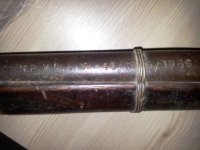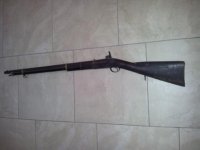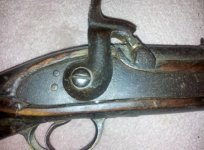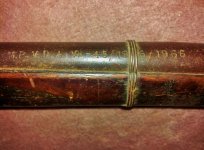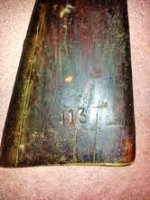Hello,
I am new at this forum and are seeking som help regarding regarding and old rifle from my grandfather.
Anyone out there who can recognize this weapon and if it has any value?
You help will be highly appreciated.
Mr. Berg
I am new at this forum and are seeking som help regarding regarding and old rifle from my grandfather.
Anyone out there who can recognize this weapon and if it has any value?
You help will be highly appreciated.
Mr. Berg

